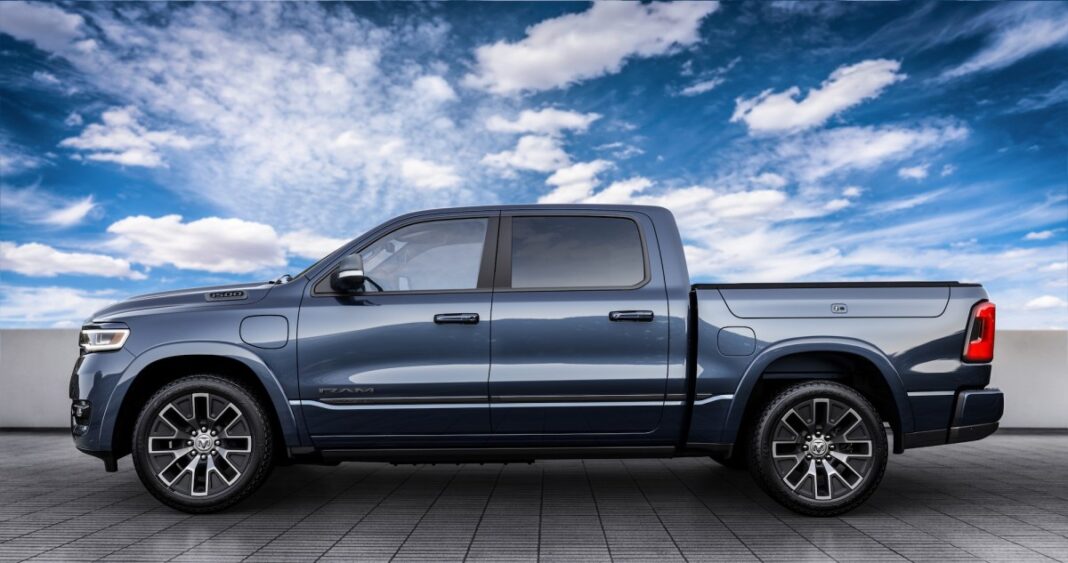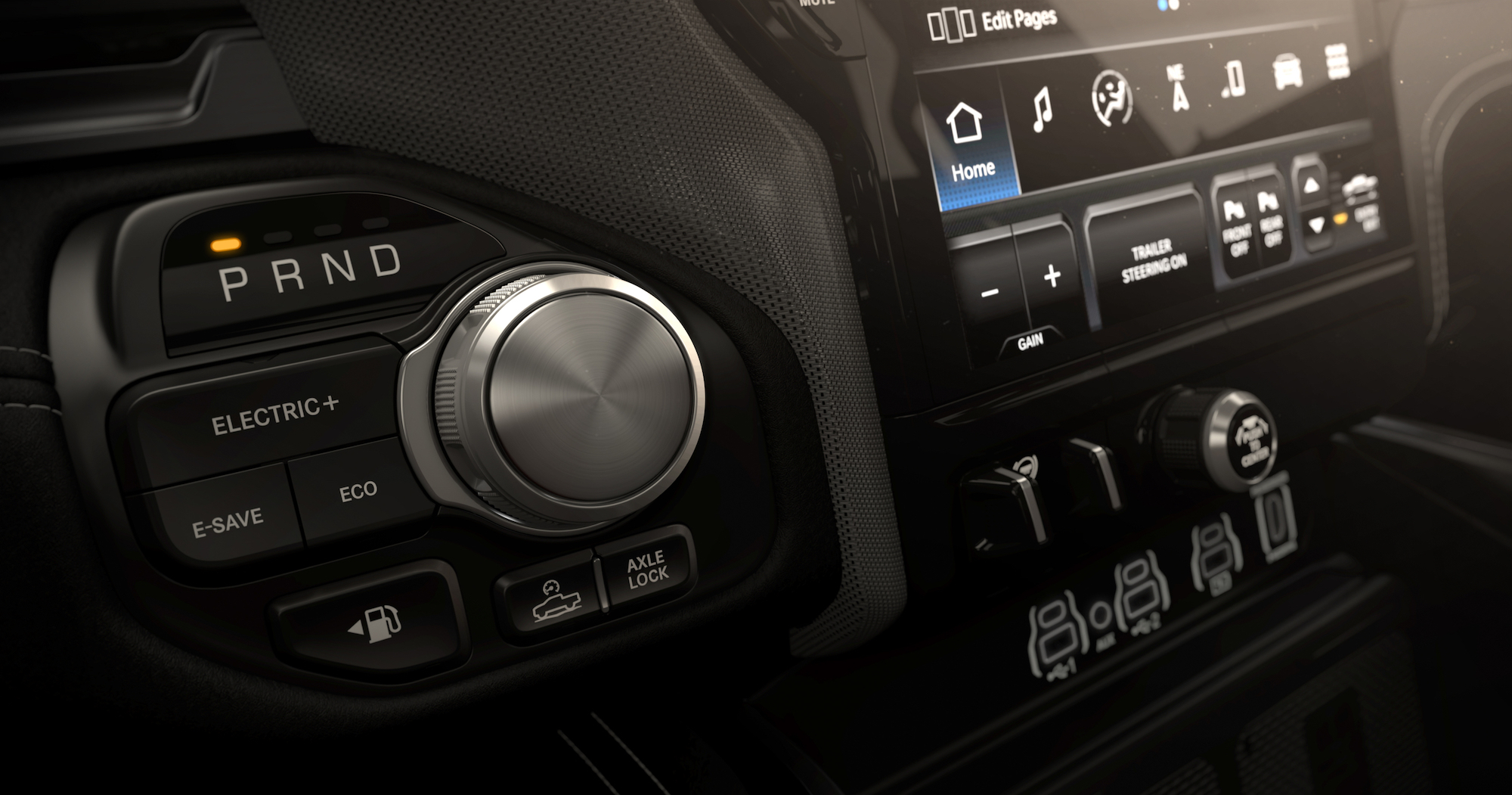Don’t call it a plug-in hybrid. Or a gas-powered vehicle either. Stellantis brand Ram wants the 2025 Ram 1500 Ramcharger, which was revealed November 7, to be viewed as a battery electric truck.
The Ramcharger does have a 92 kilowatt-hour battery pack. It also happens to have a 3.6-liter V6 engine on-board 130 kilowatt generator. That combo gives the Ramcharger a targeted range of 690 miles, the company says.
Ram said the end result, at least in terms of performance is a truck with the ability to travel from zero to 60 miles per hour in 4.4 seconds, 663 horsepower and more than 615-pound feet of torque. Importantly for truck customers, the Ramcharger will have 14,000 pounds towing capability with a class 5 hitch and maximum payload capacity of 2,625 pounds.
Customers can also plug in and charge the battery, if they so desire. According to the company, a 400-volt DC fast charger can add up to 50 miles of all-electric range in about 10 minutes. The truck also has bi-directional charging capabilities, which can be used to charge an EV or send power to a home, campsite or tools. An onboard power panel in the truck bed provides up to 7.2 kW of power.
“This is going to be a game changer for the battery electric truck,” Ram CEO Tim Kuniskis said during a media briefing with reporters.
That is if the consumer understands what it is — and isn’t — when it arrives in dealerships in 2025.
How it all works
The V-6 engine generates mechanical power and sends it to the on-board 130 kW generator, which is mounted directly to the engine. The generator converts this to electrical power, which can be used to charge the battery or be applied to the two electric drive modules.
The electric drive modules, or EDMs in automotive jargon, combines the motor, gearbox and inverter as well as the all-wheel drive capability.and are located on the front and rear axles. The 250-kw EDM on the front axle has an automatic wheel-end disconnect that allows the front wheels to spin freely in certain conditions, according to Ram. The second EDM is positioned on the rear axle with an available electronic-locking rear differential.
All of this means that the Ramcharger — this one, and not the Dodge Ramcharger of yesteryear — is what folks call a series hybrid. That shouldn’t be confused with parallel hybrids like the Toyota Prius, in which the gas engine directly drives the wheels.
Ram execs emphasized that there is no direct mechanical path from the engine to the wheels. That detail is what the company is hanging its battery-electric truck hat on.
“There’s no connection between this generator assembly and the wheels, like one might find in even a plug in hybrid — all of the propulsion is electrical,” Ram Trucks chief enginer Doug Killian said. “And that’s really important to that to that story of this being an electric vehicle.”
Inside the truck are three switches located next to the shifter that provide further insight into how this all works. These three switches, named Electric Plus, Eco and E-save, are the tools drivers can use to determine charger modes. Electric Plus mode, the largest of the three, pulls from the battery, which has about 145 miles of range. Once it reaches this level, the on-board gas-powered generator will start to charge the battery.
Customers, like say a contractor, who might want to use that battery power at a job site, can choose e-save, which will use power from the generator to propel the vehicle and keep the battery charged at the same time. In eco mode, the vehicle prioritizes the pure electric propulsion and designed to squeeze in the most range.
Bridge technology
Ram execs said plans to produce the 2025 Ram 1500 Rev battery electric truck is still in the works. The Ramcharger, however, is meant to quash fears of range anxiety and introduce new and existing Ram customers to electrification.
“There’s so many advantages to a battery electric vehicle, but there are certain things that are slowing people down,” Kuniskis said. “And if I can say, the things that are slowing you down like charge time and range anxiety and infrastructure, you don’t have to worry about it with this.”
Part of the challenge will be convincing customers that Ramcharger is different from its traditional battery electric truck counterparts. That’s where marketing will play a role. As Kuniskis noted, he will never call that V-6 engine, and engine. Instead, it will be an onboard charger for a battery electric truck.
Customers may also be persuaded by the Ramcharger’s normal Ram truck looks. This isn’t some whack-a-doodle concept. And while there are some EV branding details like the LED headlight and taillight design, everything else screams normal-looking truck.
Source link










